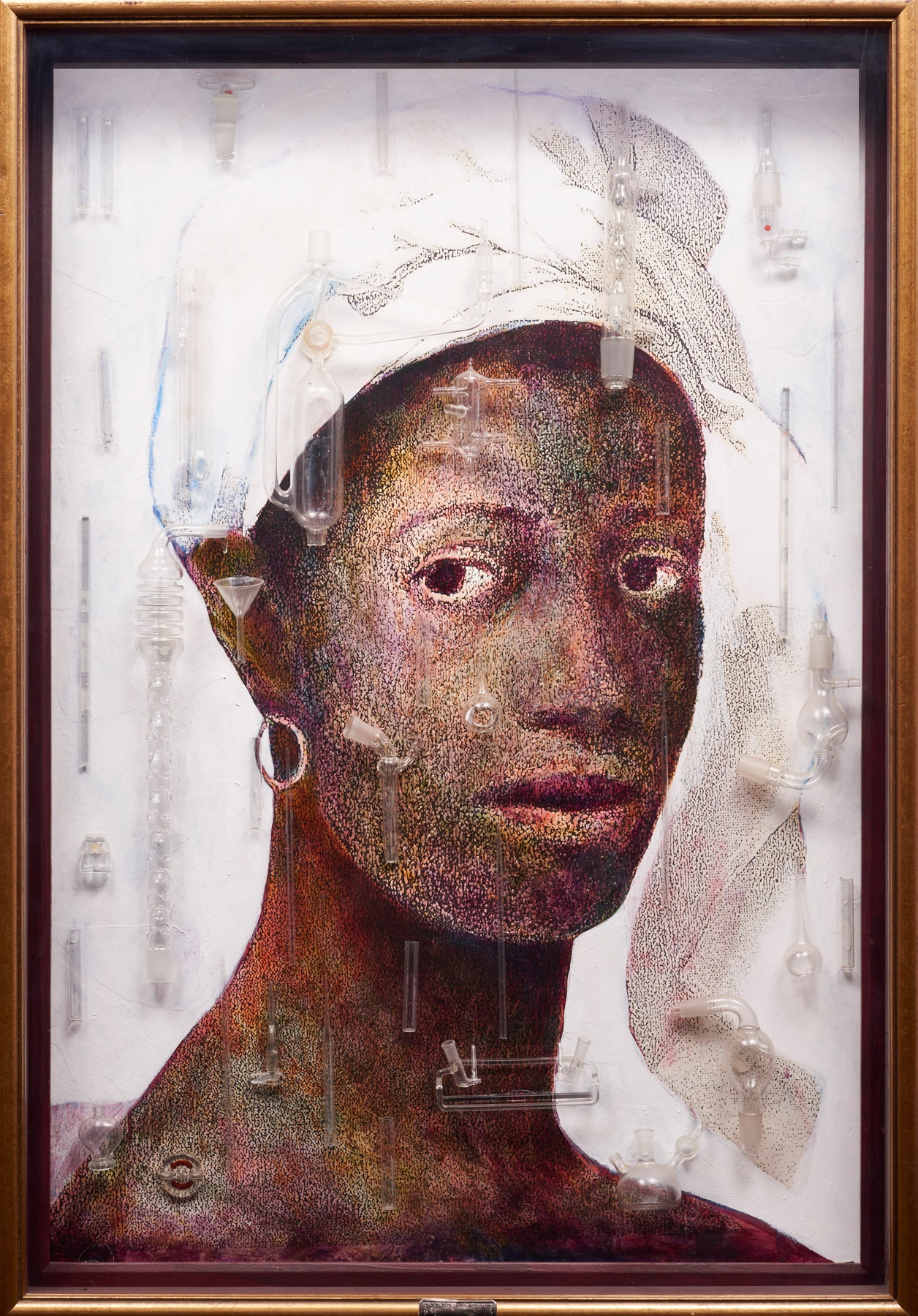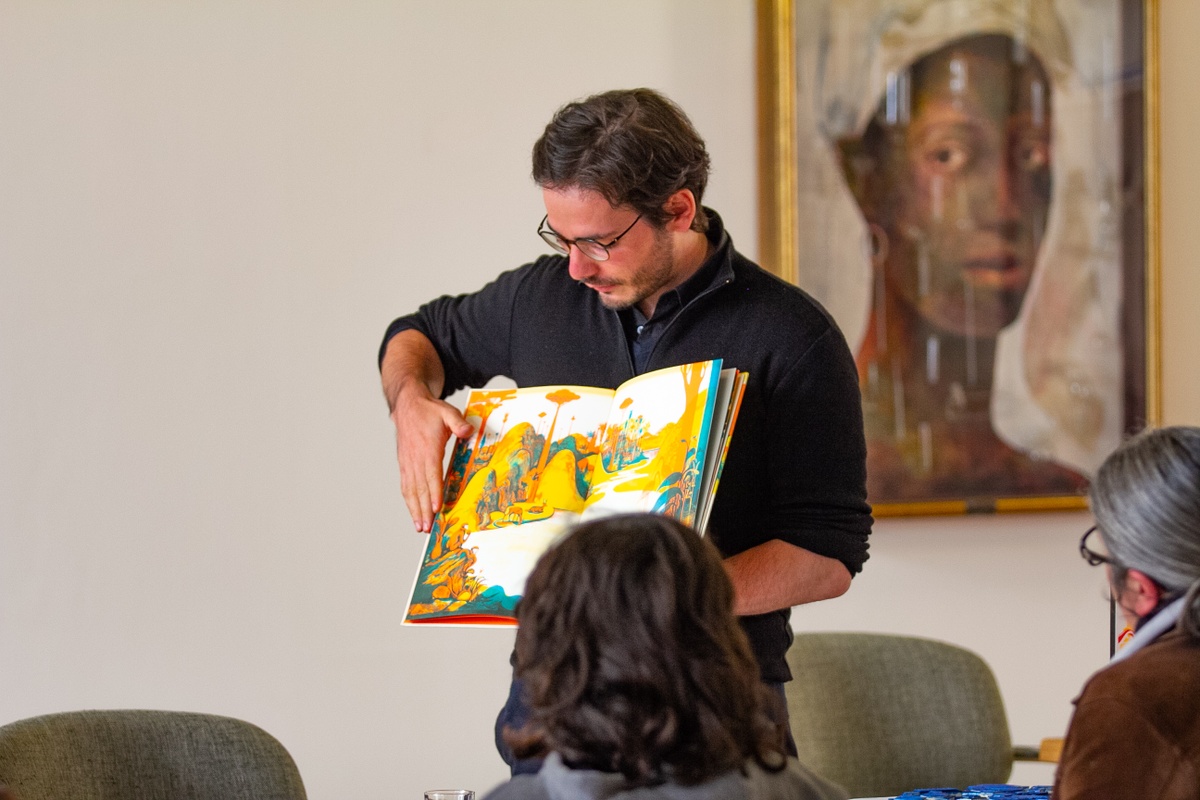Penny Siopis

Glass and Race (Dark) is the left-hand panel of a diptych. Its twinned image, Glass and Race (Pale), is absent. Now alone, the painted woman looks out towards the viewer with a studied forbearance. Borrowed from art history – from Marie Guillemine Benoist’s Portrait of Madeleine (1800), formerly titled Portrait of a Negress, which hangs in the Louvre – her image has long been contested. In nineteenth-century Paris, a woman of colour was an uncommon subject in academic painting and widely considered distasteful, a provocation (one contemporary critic rejected Benoist’s portrait as 'noirceur', a black stain). Yet the image of Madeleine endures today as a neoclassical novelty and a symbol of the French abolition of slavery. Reworked and reimagined in Siopis’ painting, her portrait becomes an allegory of representation and gestures to the appropriation of black women’s labour, bodies and lives. Made from photocopy transfers coloured with oil paint, Madeleine’s likeness speaks to the proliferation of images that have come to shape collective imaginings of blackness.
b.1953, Vryburg; works in Cape Town
In describing Penny Siopis’ practice, a necessary caveat: it is too slippery in form, too wide-ranging in ambition, to be distilled to pithy statement. Hers is an “aesthetic of accumulation,” a logic of excess, a hoarding of signs. Edges, boundary lines, beginnings and endings, states of change – these are among the subjects that inform her enquiries. As to a single preoccupation, the artist offers residue. A ‘historical materialist’, Siopis looks to the traces of past action, asks after the vibrancy of artefacts made and found, what they might recall of their provenance. She moves between modes with limber agility, playing the roles of both artist and archivist. While predominantly a painter, Siopis’ practice extends to include found film and objects in a sustained meditation on trauma as it appears, the artist writes, “in material amalgam.” From her early ‘history’ paintings to Will, a growing collection of objects and their anecdotes to be bequeathed to friends and family at the artist’s death, loss (past, forthcoming) is a constant undertone. Pursuing a “poetics of vulnerability”, Siopis transcribes, however obliquely, shared and individual griefs – punctuated by small moments of tactile transcendence – in the inherited images and historical flotsam, in the residue, with which she works.
